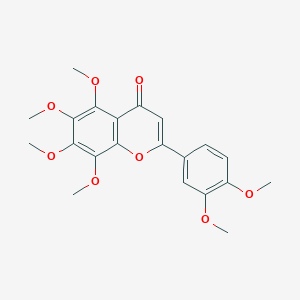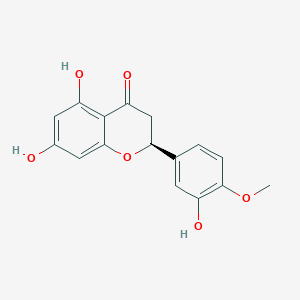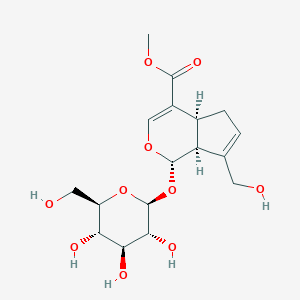Description
Paeoniflorin is the main active component extracted from Bai Shao, and it has been shown to be effective against gynecological disorders, pain, and liver-yang hyperactivity, among other things. Paeoniflorin has been shown to have antidepressant-like effects in several animal models of depression, as well as a neuroprotective effect.
Paeoniflorin is a chemical compound that is primarily extracted from the root of Paeonia lactiflora, a species of peony commonly used in traditional Chinese medicine. It has gained attention in modern pharmacology due to its various potential health benefits. Here are some key aspects of paeoniflorin:
- Anti-inflammatory Effects: Paeoniflorin is known for its anti-inflammatory properties. It has been studied for its ability to reduce inflammation in various conditions, potentially benefiting individuals with inflammatory diseases.
- Neuroprotective Properties: There is evidence suggesting that paeoniflorin may have neuroprotective effects, which could be beneficial in the treatment of neurodegenerative diseases like Alzheimer’s and Parkinson’s disease.
- Cardiovascular Health: Paeoniflorin may contribute to cardiovascular health by improving blood circulation and possibly reducing the risk of certain heart diseases.
- Analgesic Effects: It has been observed to have analgesic properties, making it potentially useful in pain management.
- Immune System Modulation: Paeoniflorin might play a role in modulating the immune system, which can be beneficial in treating autoimmune diseases and in enhancing the body’s resistance to infections.
- Antioxidant Activity: This compound also exhibits antioxidant properties, helping in the protection against oxidative stress and related conditions.
Applications of Paeoniflorin:
- Traditional Medicine: It’s widely used in traditional Chinese medicine for various ailments, including menstrual discomfort, muscle cramps, and nervous system disorders.
- Supplements: Paeoniflorin is available in dietary supplements, often marketed for its anti-inflammatory and neuroprotective benefits.
- Research and Drug Development: Ongoing research is investigating its potential as a therapeutic agent in modern medicine, particularly in treating inflammatory and neurodegenerative conditions.





